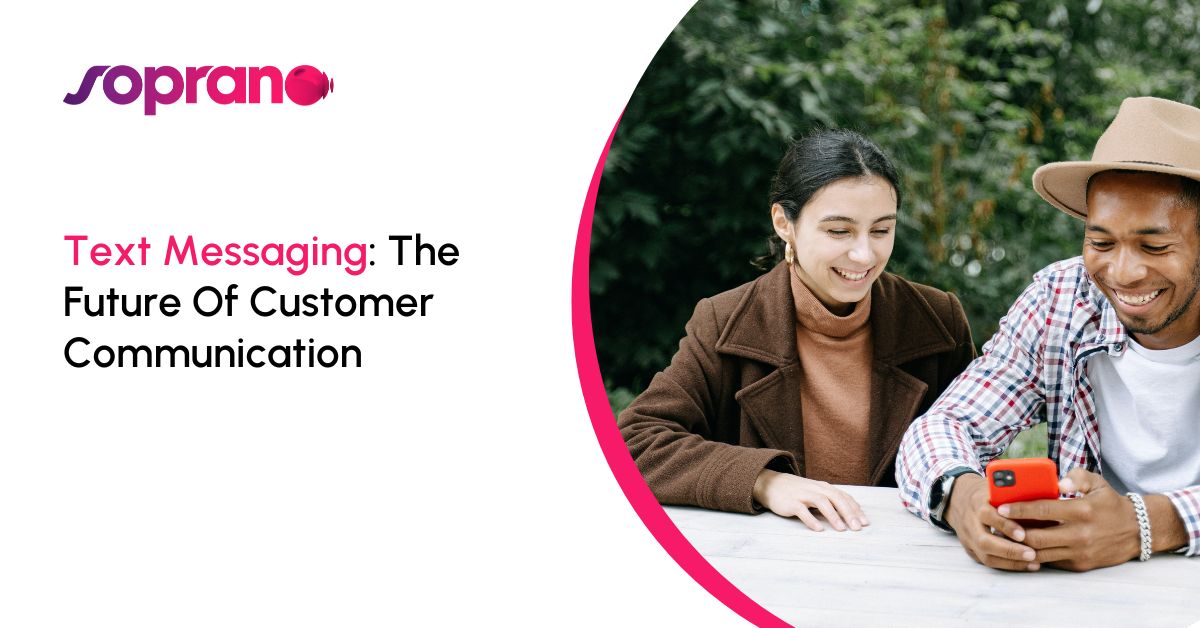Text Messaging: The Future of Customer Communication
There are many ways to reach consumers in today’s world. To maximize customer engagement, brands need to use the customer communication channels their audiences prefer, and their message needs to be cohesive across all channels.
Text messaging has become a preferred method of communication with customers because research has shown that most people open text messages within three minutes of receipt. Furthermore, when the engagement metrics of text messages and emails are compared, the response and open rates for texts are significantly higher.
It’s clear that text message marketing has become one of the most direct and effective methods of connecting with your customers. Following are some tips on how to best incorporate it into your marketing strategy so you can achieve the customer engagement and results you’re looking for.
The importance of a good customer communication
Text messaging is used in businesses in three areas: operations, security and promotion.
Its role in operations can include anything from sending texts to let a customer know about an order delivery status, to texting a restaurant guest that their table is ready.
In terms of security, text is largely used to add a layer of security to account sign-ons, such as two-factor authentication, one-time password creation and password resets. And of course, promotion-wise, text message marketing is widely used to inform customers and prospects about sales, events and special offers.
Text messaging plays a vital role in an omnichannel marketing strategy. So many marketing emails simply go unread in crowded inboxes, whereas text offers a direct approach that is far more likely to not only get a customer’s attention, but their engagement as well.
The realm of text message marketing now extends well beyond SMS to more interactive and visual messaging such as Rich Communication Services (RCS) and Multimedia Messaging Services (MMS). Inbound messaging capabilities allow customers to easily initiate contact with a company by using designated keywords.
Considerations for customer communication in Marketing
No matter what channel you are using for customer communication, your content must be relevant to the recipient. Personalization leads to action.
Content should be tailored to the customer at whatever stage they are at in the buying process. Once you do this, you need to be clear on what you are offering or what action you would like the customer to take.
If you can convey to customers within 5-10 seconds what the benefits of engaging with you will be, you’re far more likely to achieve a successful response rate for your marketing efforts, no matter where you are engaging them.
It’s also crucial to understand the challenges of text message marketing before you implement it.
SMS messages have character limits, so you need to think about how to communicate your message in 160 characters or less – this requires some linguistic skill! If your content is longer than this, your message may be broken up and delivered in the wrong sequence.
Additionally, while there are newer, more visual ways of messaging, not all phones are equipped to receive complex graphics or videos. With this in mind, if your campaign involves RCS, you need to ensure there is a fallback option programmed in that effectively conveys your message to phones that can only receive text-based content.
Improve your customer communication with Soprano Design
If you are looking to integrate text messaging into your marketing and customer engagement strategy, it’s important to find the right vendor who can provide a powerful suite of APIs.
This allows for a more seamless integration experience and requires less reliance on your company’s internal IT resources. It’s also best to work with a provider whose engineering team can deploy those integrations with minimal disruption.
Soprano Design has a suite of APIs that allow for faster integration by using one unified API platform. Soprano also has a range of powerful low-code APIs, which are ideal for businesses looking to develop custom solutions or enhance existing software with mobile messaging functionality.
Interested in learning more?
Continue Learning about Communications Platform as a Service

